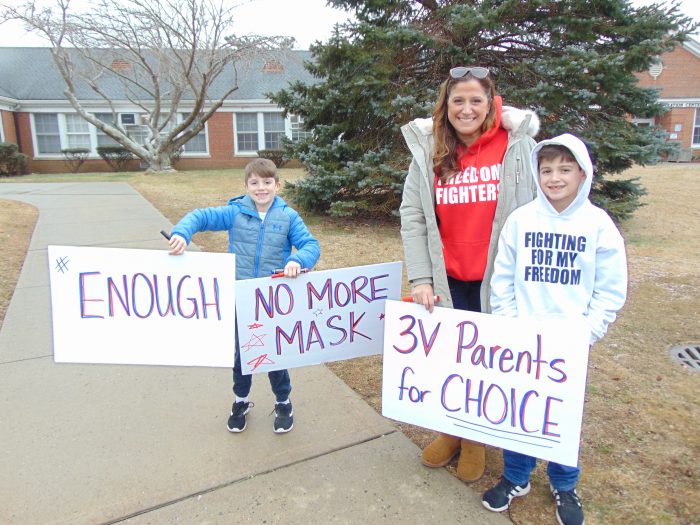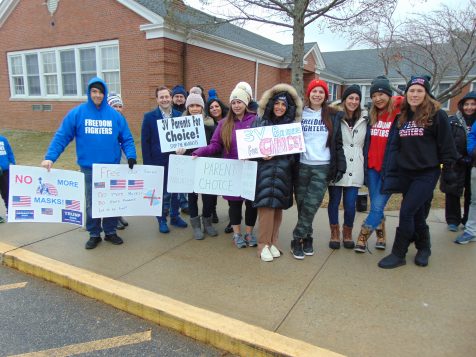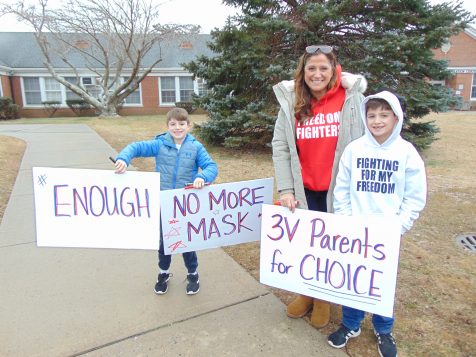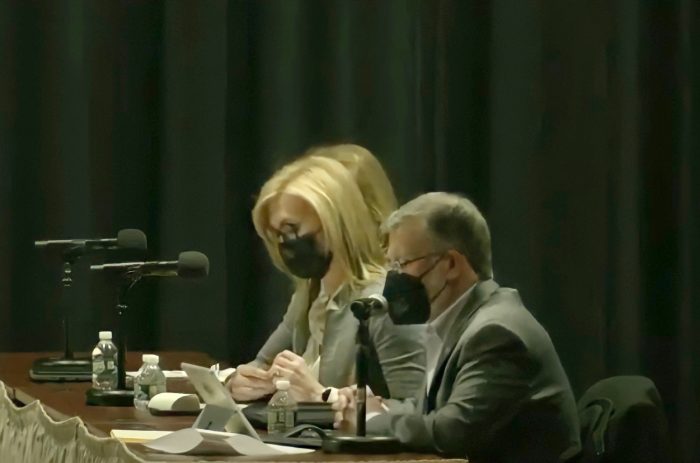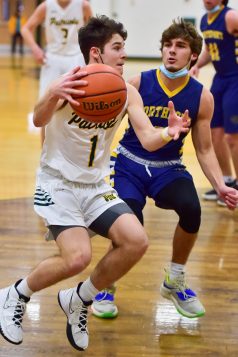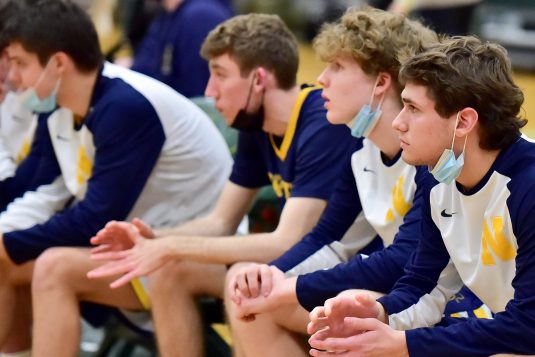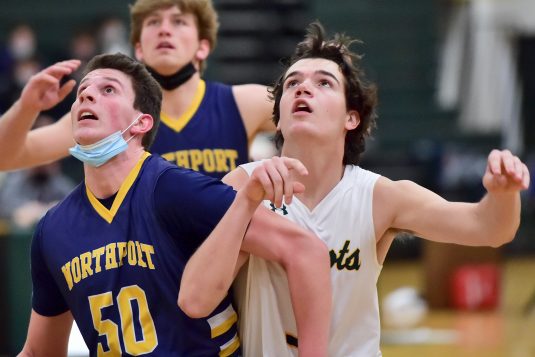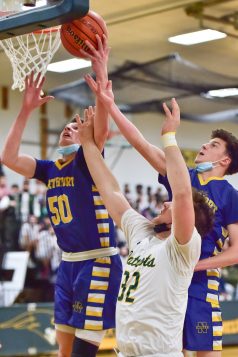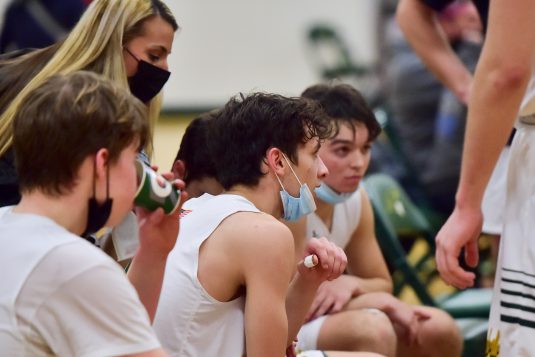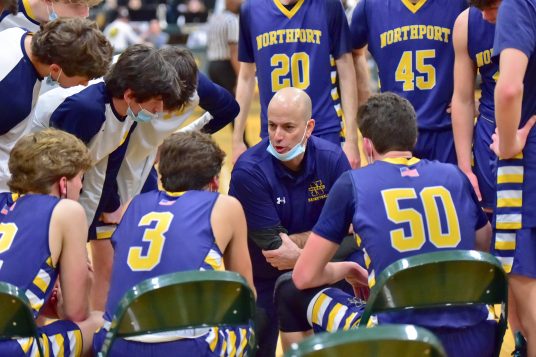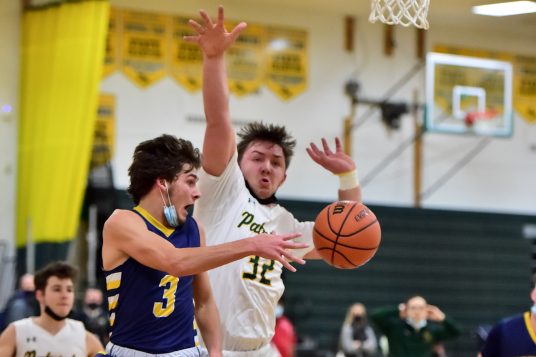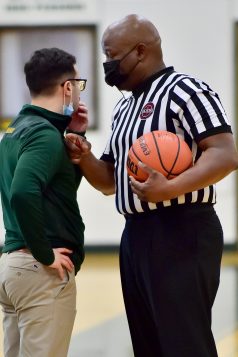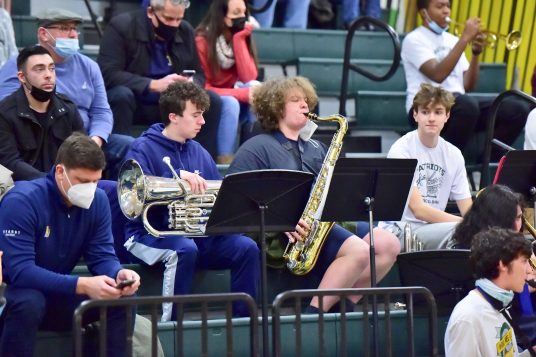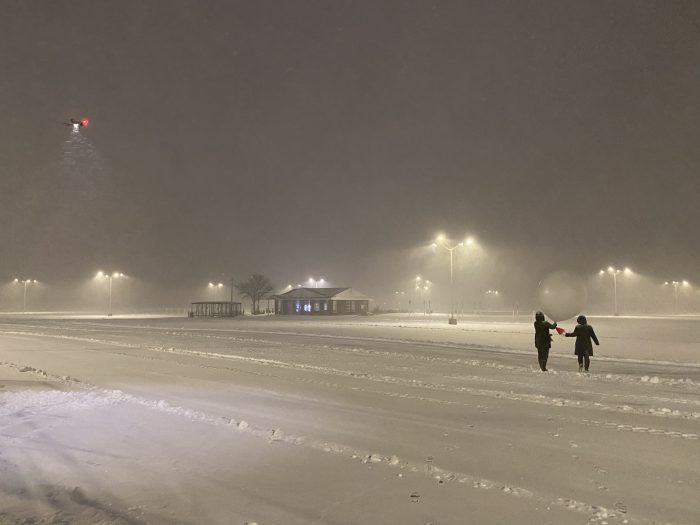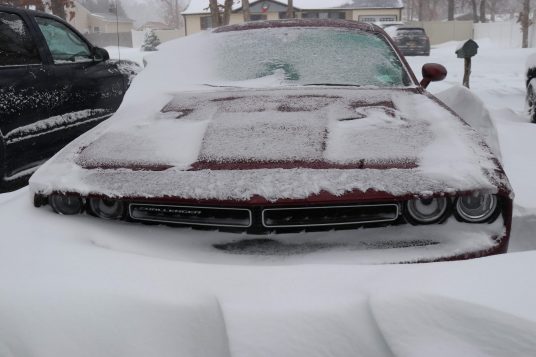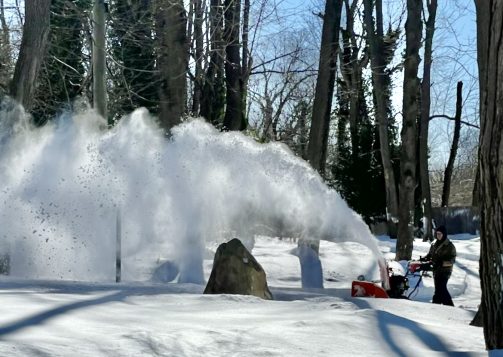After a confusing week, parents across the North Shore have been upset by the state’s constant changing rules on mask wearing in schools.
On Tuesday, Jan. 25, some parents in local school districts opted out of sending their children to class with a mask after a New York State Supreme Court judge struck down Gov. Kathy Hochul’s (D) mandate.
The mask mandate was first enacted in December by the governor, requiring face coverings in schools and other public places after the omicron wave hit the state with rapid numbers.
On Monday, Jan. 24, Supreme Court Justice Thomas Rademaker of Nassau County wrote that Hochul does not have the authority to impose the mandate since emergency powers are no longer in place. He then decided that the statewide mask mandate was deemed unconstitutional.
Parents across the state heard this and decided to either unmask or mask up their kids, despite letters being sent out from superintendents in local areas stating that masks were still mandatory as they awaited an appeal.
Rocky Point school district
Rocky Point parent Michelle Salz said that her district sent out a notice late Monday night saying that mask mandates were still in effect. However, when her children came to school Tuesday, administrators and staff were not enforcing the face coverings.
“My kids and myself try to do what’s best for society,” she said. “I rely on science to make my decisions and I taught my kids to care about others.”
Salz added that she was disappointed to hear from her children that students in the school were not wearing masks properly, or at all.
“It seems our district who we entrust our children with, they’re supposed to be educated and use critical-thinking skills to make their decisions,” she said. “They’re supposed to be keeping our kids safe.”
The next day, she sent a letter to Superintendent Scott O’Brien and the board of education.
“To the utter disbelief of most parents in our school district, Rocky Point Union Free Schools has decided to ignore the directive of the NYSED to continue mask wearing in schools until an appellate court has issued a final decision regarding the Nassau County Supreme Court matter January 24,” the letter read. “We believe this to be reckless endangerment to our children and to the families in the community. Please advise what remedies are available to us through your office, as we are considering legal action on this matter and would like to avoid it if possible.”
Salz added that she is so disappointed in the way the school has handled the COVID-19 pandemic that she is planning on leaving the district.
“I don’t want to live here anymore,” she said. “I want my kids to have a good education.”
Scott O’Brien, superintendent of Rocky Point school district, said in a statement that the district is adhering to all state mandates in place with regard to the mask requirement for school districts.
“At this time, the Appellate Division has granted New York State’s motion for a stay of enforcement of Judge Rademaker’s January 24 decision pending hearing and determination of the appeal, on the condition that the appeal is perfected on or before March 2, 2022. As such, while the stay is in effect, the New York State mask regulation remains unchanged for our district.”
O’Brien added, “We understand how this changing information can be frustrating to families and confusing to students. We appreciate our community’s patience as we await further Appellate Division decisions that impact the mask mandate.”
Three Village school district
Monica Balsan, who has three children in the Three Village school district, was one of many parents who told their children to say “no thank you” when asked to cover their noses that Tuesday.
Balsan said she was unhappy with Three Village still implementing the mask mandate after the court ruling.
“After the court ruling that said the mask mandate was unconstitutional, they still requested the kids wear masks,” she said in a phone interview Friday morning. “I told my kids to be respectful and not argue with their teachers, but if they were uncomfortable to call me.”
Balsan said that her second-grade son, Jameson, has been “emotionally drained” by the pandemic, and has been begging his mom to be homeschooled as he is tired of wearing a mask at his desk.
“He can’t take it anymore,” she said. “It hurts his ears, he can’t breathe.”
But for the days following the update on the mask mandate, Balsan said her third-grade son, Jackson, was holding his ground in and out of school by joining his family and friends at a rally outside the Three Village North Country Administration Building Friday, Jan. 28. There, he said wearing a mask has been “terrible,” and he was hoping he wouldn’t have to wear a mask this week.
The rally, which had dozens of community members voice their concerns against the mandate, occurred just hours before the appeals hearing went live.
During the rally, children held signs that read, “I Wish I Could See My Friends’ Smiles,” “I’ll Never Get These Years Back” and “No More Masks,” while parents held signs that read “3V Parents for Choice.”
Many in attendance also wore sweatshirts bearing slogans such as “Make America Free Again,” “Fighting for My Freedom” and “Freedom Fighters.”
Jessica Rudin, whose son is in kindergarten and has two younger children, said while she doesn’t believe in the mask mandate, her son has worn the mask every day to school. However, she added, it’s time for the masks to come off.
“We have been standing up for parents’ choice against the mandates for quite some time,” she said. “We’re looking to make a statement in our community.”
Later that evening, the governor was allowed to extend the indoor mask mandate until Feb. 10. On Monday, the court officially extended the stay, allowing Hochul to keep the mask mandate in place until March 2.
“My primary responsibility as governor is to keep New Yorkers safe,” Hochul said in a statement. “Mask regulations keep our schools and businesses safe and open, protect vulnerable New Yorkers and are critical tools as we work to get through this winter surge. Thanks to our efforts, including mask regulations, cases are declining and we are seeing major progress in the fight against COVID-19.”
But anti-maskers are still going to fight for their right to choose.
“We don’t want them masked anymore,” Balsan said. “We’ve had enough. We can’t deal with [our kids] frustration. Everyone is trying to do their part.”
Balsan said that if other families want to wear a mask, that should be their choice.
In a statement Tuesday, Three Village Central School District said it is “working to follow all current directives related to COVID-19 practices in our schools, including the mask wearing mandate. At this time, the district does not have any intention of creating or joining a lawsuit challenging these state directives. We appreciate our students, staff and families understanding and cooperation as we work together to keep our schools safe, supportive places for learning.”
But across the state, educators were happy with the court’s decision.
“We are pleased the Appellate Division granted the application by the Department of Health and the governor’s office, confirming the lower court’s decision is stayed pending further proceedings,” said Betty Rosa, commissioner of education with the New York State Board of Regents in a statement. “As such, the mask mandate remains in effect for schools across the state. We support Governor Hochul and the state Department of Health as they continue with the appeal. We thank the members of our school communities for their patience during this process.”
Other school districts
Superintendents in other districts released statements that they will continue to monitor the ever-changing protocols.
“The Port Jefferson School District has always made it our priority to follow the law and respect the process of our state,” said Superintendent of Schools Jessica Schmettan. “As we are committed to fostering a school environment that is not only lawful but considerate, the district is continuing to comply with the NYS school mask mandate, as we await any further updated directives.”
Shoreham-Wading River school district also commented: “The district continues to follow all NYS requirements regarding mask wearing in schools and will monitor the situation for any updates to the matter.”

